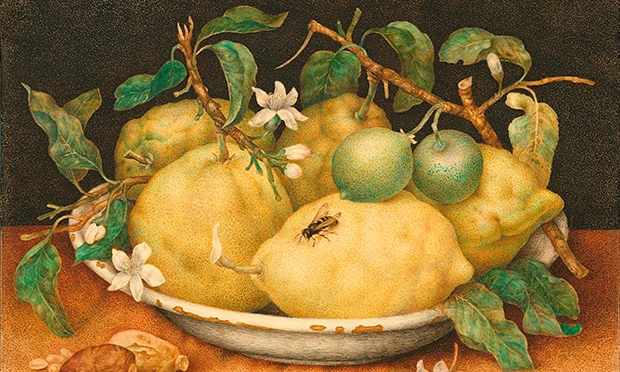Obituary: Gillian Riley

Giovanna Garzoni’s Still Life with Bowl of Citrons, which Gillian wrote about in her Citizen column in January 2021. Image: Wikicommons
My sister-in-law, Gillian Riley, a food historian, died on 11 November 2024, aged 90, at Mary Seacole House in Hackney.
Gillian was born on 20 November 1933 in Bradford. She attended Selby High School and Cheadle Hulme High School before going to Girton College, Cambridge from 1951 until 1954.
She was a book designer at Thames & Hudson, a freelance designer, and then taught at Reading University in the Department of Typography, where her partner James Mosley also worked.
Gillian wrote a regular column on food for the Citizen, and also several books on food history, including The Oxford Companion to Italian Food, Renaissance Recipes, Impressionist Recipes, The Dutch Table, and her National Gallery cookbook, A Feast for the Eyes.
Gillian’s work saw her draw on all of her knowledge and skill in relating painting, by both famous and less famous painters, with food.
Her writing was direct, but always with a touch of down-to-earth humour. She certainly didn’t write like a modern TV chef.
Her piece in March this year for the Citizen on La Grande Baignoire – Pierre Bonnard’s painting of his wife Marthe lying in the bath – commented not on the quality of the artistry but the lack of taps in the picture. Gillian was concerned about the person who must have carried all that hot water into the bathroom.
Gillian could read a Spanish or Italian still life with precision. She would know the painter, where the food might have been sourced from, for whom it would have been cooked and for which occasion.
There was a sociology in her reading of paintings and food which was unique.
A 2007 Guardian review of The Oxford Companion to Italian Food praised the book’s erudition and astonishing knowledge, but thought the range of its references eccentric. It’s that eccentricity that made Gillian so engaging and so instructive.
I had several meals at her house, all cooked quickly with great care, a bit like her writing. One that I remember clearly was nothing exotic.
I’d been doing some DIY not far from her house and we were invited in, hands covered in plaster and starving hungry. Gillian cooked me and my wife a delicious dish of sausages and cabbage in one of those white enamel basins with a blue rim.
Everything was just right, with a fleck of caraway seed on the pale green cabbage. It was a dish that might have been taken from a 17th-century Dutch interior painting, nestling on the corner of the table, waiting to be eaten by a local bigwig or scoffed by a hungry-looking dog lying in wait.
Gillian has now gone, but I hope someone, somewhere, in search of something a bit different, comes across one of her books and marvels at the quality of her writing, her extraordinary knowledge, her good humour and her love of art and food.
